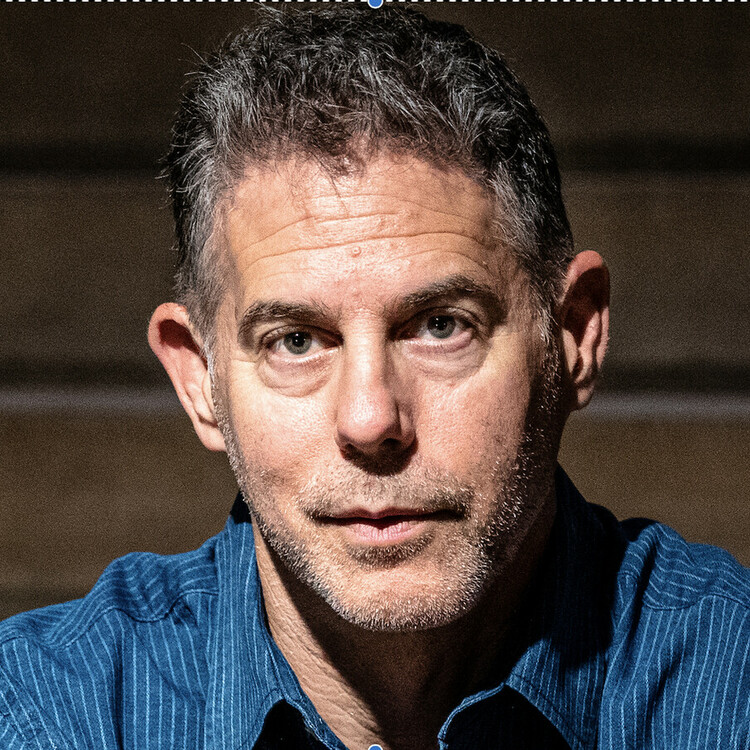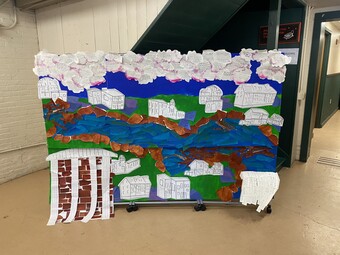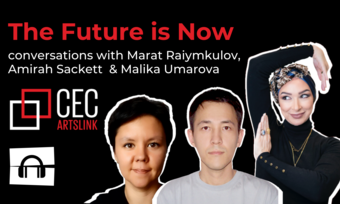Translations—CPCP Update 2
The Catalyst Initiative
A few years ago I started writing at HowlRound about my ideas for Civic Theater, which turned into my ideas for Civic Practice, which turned into the Center for Performance and Civic Practice (CPCP). Which is now a busy space (not a physical space but a space nonetheless) where collaborators and I are working on a variety of projects. For this series of writing about CPCP, I’ve enlisted the aid of Northwestern University Graduate Student Kati Sweaney, who is interviewing me and transcribing the text. I take the text and shape it. I am grateful to Kati for her thoughtful questions and keen ear.
KS: So what is the Catalyst Initiative and how does it fit into the work of CPCP?
MR: If you’re researching theater and performance based community-engaged practice mostly what you find are large, multi-year, quarter- to half-million dollar projects, like what you’ll find at the great Animating Democracy website full of case studies. It’s difficult to find models for someone who’s exploring this work and wants to do a project with a civic partner on a smaller scale that requires relationship building but not a multi year, hundred thousand dollar commitment.
So I imagined this program called The Catalyst Initiative. The purpose of the Catalyst Initiative is to serve individual and ensemble artists who are interested in work that brings arts-based practice into collision with community activity in meaningful ways, but aren’t seeing access points and resources that connect them to vital examples all over the country. It’s also to support small-scale projects that have limited scope in terms of hours and that arise out of recent, developing relationships. The initiative gives a little leverage and momentum to an artist and community partner to do a particular project with support from the CPCP that will hopefully lead to larger ongoing collaboration between the partners. We not only wanted to figure out how to provide such support, but we wanted to use that support to build a small cohort of such projects that can learn from each other; that can go through capacity-building and mentorship; and that can be documented into an online catalogue for others to look at and learn from.
The initial goal of the Catalyst Initiative was twenty-five projects, simultaneously, around the country in a spread of urban, rural, and suburban environments. I worked for about half a year developing the model for a pilot, including work with an advisory board, and The Andrew Mellon Foundation is supporting a five-project pilot. Each project must be a small organization or an individual artist. I want it to be accessible for folks who are in earlier stages of their development, institutionally or individually. There will be some funding for the artist or arts organization; there will be some funding for the non-arts community partner; and there will be compensation plus travel and lodging for the whole cohort to come together in Chicago for a multi-day training, looking at partnership and looking at the conceptual palette through which they could imagine projects.
As opposed to being an open call, this first round of five is curated. I’ve got a national advisory council that’s helping me locate and identify five diverse projects with artists who have some experience with working in response to the needs of a non-arts community partner. They don’t have to be theater artists, but they have to be practicing in what we can say is theater or performance-based practice. For me, that means time-based activity that engages imaginative acts and expressive actions.
Once we curate those five projects, there will be conversations and commitments from them and a non-arts partner. There are no blind dates. They come in with an idea of a non-arts community partner. They develop that relationship and get a letter of commitment from that community partner. It’s ideally not a new partner. The key is the projects have to be manageable in sixty hours. From the beginning of planning, through execution, through a bit of documentation, sixty hours total. On the one hand, this might seem really short. On the other hand, I think—and this is after a lot of conversation and from my own experience—that what it does is makes you think in concrete terms, like twelve hours of planning, forty hours of action. Or maybe even less: this could be a three-Saturday sequence of workshops. This could be a two-evening session. It could take so many forms. And then it leaves eight hours on the back end for some documentation and for joining the cohort.
It really is a lab to see if this kind of support helps these projects feel successful for the artists and the non-arts partners. It’s a lab for seeing if this frame gives them a chance to document and share. We also have money for an evaluator who is going to be able to visit each site and write about each project. And we have resources for me to visit each site and be available to monitor the projects along the way. The goal is to stay in conversation with funders, and if it feels like this pilot is usefully grappling with how to support and disseminate this kind of work, we’ll grow the cohort to include twenty new projects and make those an open call, outside the curated cohort.
KS: Does the Catalyst Initiative have an institutional home?
MR: It’s an initiative of the Center for Performance and Civic Practice; at this point Sojourn Theatre is the fiscal agent for the Center. The Center is on its way to having its own home, but right now it’s run through Sojourn Theatre. Sojourn and Sojourn artists will not be amongst the recipients of the five pilot grants, nor any support so long as the Center is housed within Sojourn’s fiscal structure.
KS: Are you at a point where you can talk about who you might be funding for your initial five projects?
MR: Right now, the advisory council is identifying artists to be in conversation with. I’ve started conversations with artists in places like New Mexico, California, Illinois, and Maine.
KS: You mentioned bringing an evaluator in. Do you have a sense of the standard or set of goals against which you’re going to evaluate these projects? My larger question really regards what is “success” here.
MR: I think there are five areas of success I’m interested in for this pilot round. One: are the projects in which the artists and the non-arts partners engage successful and impactful with regard to the goals they’ve defined together? Two: has the support that we give them through this program made these partners able to build healthy relationships and create interesting, rigorous practice? Three: is there impact in the communities outside the partnerships? Can the communities note and articulate that impact? Four: are we able to learn enough in this short period of time to create a mini case study model that is readable online for those who have no access to the projects—not just so somebody can replicate it, but so it can be an access point for other people to explore civic practice. Five: are we supporting work that is not being supported elsewhere? Are we helping build a path for others to support it?
KS: When you say that you want to make sure there’s “impact,” what do you mean?
MR: Let’s say there’s a local Department of Children and Family Services that partners with an artist in New Orleans, and they do a project that works with foster care families. They decide to do a workshop on communication and parenting that the artist is going to help design and lead, with experts in that area and with those parents. There are different impacts there. Do the artist and the DCFS feel that they were able to design an effective workshop? Did the people who went through it report that they had a really useful experience? Does the foster care system in that city, in the longer term, note the return of those families into the foster care system to be helpful because they got support that they weren’t getting elsewhere? It involves trying to define the different types of impact that the practice might offer.
KS: To what extent is artistic merit something that you’re looking for here, and if so, how are you defining that?
MR: That’s a really important and challenging question, because these projects won’t necessarily look like the traditional output of our discipline. I think “artistic merit” means the caliber of the collaboration that the artist brings to the relationship; the creativity and innovation that they bring to the design; conceptually, their thoughtfulness and flexibility rather than just pulling from their bag of tricks; and importantly, I think one would judge merit based on the quality of the moments of the practice. That could be in the skill in leading the room; it could be in the expression that happens, if it’s an expression-based event; it could be in the imagining or envisioning in which the artist leads the group. It won’t necessarily be something that can be publicly fed back on.
The definition of success is not whether they made something aesthetically beautiful. I believe there will be aesthetic beauty throughout the best of civic practice projects. But the merit discussion is a larger one than just that.
It makes me think about the work that Bob Alexander did in Washington D.C. with Living Stage for years, which was all about the work that happened in the room. Occasionally, the ensemble of teaching artists would do shows. But really, eighty percent of the work was what they did in the room with partner citizens. You can only gauge that, in terms of artistic merit, by being in the room and being aware of the quality of imaginative work, communicative work, expressive work, transformative work. That is important. Ideally, that’s something I’m helping mentor them on, and that the capacity building workshop is trying to evaluate. The definition of success is not whether they made something aesthetically beautiful. I believe there will be aesthetic beauty throughout the best of civic practice projects. But the merit discussion is a larger one than just that.
KS: What’s your timeline like?
MR: It’s a fourteen-month timeline. This fall and early winter we’re trying to identify artists. Ideally, the cohort capacity training would happen in early to mid spring. The work would happen in spring and summer, and we’d be wrapping up next fall. We’ve got basically until Thanksgiving 2014 to wrap it up and evaluate.
KS: When it comes to the kind of community partners you’re looking for, are there parameters there? Are you looking for not-for-profits?
MR: I think a civic partner that is non-arts focused can be many things. It can be a hospital, a school, a municipal department, a social service agency, a business. It’s not particularly limited. Yes, a for-profit model is often working for asset and resource accumulation, but there are plenty of businesses working in social entrepreneurship. We’re going to define appropriate cohort partners as ones working toward the public good, and the advisory council will work with me to make sure that we are both attentive and complex in our consideration of what that means.










Comments
The article is just the start of the conversation—we want to know what you think about this subject, too! HowlRound is a space for knowledge-sharing, and we welcome spirited, thoughtful, and on-topic dialogue. Find our full comments policy here
Hello Michael, Really enjoyed this and more recently, your conversation with David Dower. Bricolage Production Co. is extremely interested in being considered for the next wave of catalyst cohorts, as referenced on your call with David. Is there an application process? As always, thanks for your work and thinking so deeply about the resiliency and utility of our sector... Best,
"…to serve individual and ensemble artists who are interested in work that brings arts-based practice into collision with community activity in meaningful ways, but aren’t seeing access points and resources that connect them to vital examples all over the country." YES. This is fantastic, Michael. We (artists) are out here and will benefit tremendously from what you are doing through the CPCP. I hope you will continue to engage in discussion with us through HowlRound or other means as things unfold. By the way, I love your explorations of "impact" and "artistic merit."
"…to serve individual and ensemble artists who are interested in work that brings arts-based practice into collision with community activity in meaningful ways, but aren’t seeing access points and resources that connect them to vital examples all over the country." YES. This is fantastic, Michael. We (artists) are out here and will benefit tremendously from what you are doing through the CPC. I hope you will continue to engage in discussion with us through HowlRound or other means as things unfold. By the way, I love your explorations of "impact" and "artistic merit."